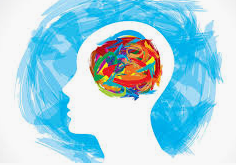Windows 8 Disappointed; So Where is Microsoft Headed?

If you had a chance to analyze the Net Applications’ May 2013 release of NetMarketShare monthly operating system statistics it would be clearly obvious to you (as it is the whole world) that sales of PC’s are continuing to dive. Yes, not just fall but dive! One factor that might be further accelerating this downfall is the infamous and notorious Microsoft Windows 8.
Windows 8: the Black Sheep of the Family
Reviewing the performance of Windows 8 since its release, one can safely conclude that Windows 8 easily lags behind its predecessor Windows Vista at identical points in their life-cycles; Windows Vista being the first rogue child of Microsoft’s Windows line up.
Don’t get me wrong. Windows is still the dominant desktop operating system. Amongst all operating systems currently available for PC’s, Windows 7 is ranked at the top. This is followed by the still popular Windows XP. Vista also makes this list coming in at number 3.
But what this list does not tell us is that Windows is not the dominant END user operating system if you include tablets and smartphones. What is even more troubling is that Windows 8’s growth rate lags further and further behind Vista’s dismal numbers when it was released in 2007.
If we track the lifecycle of both Windows Vista and Windows 8, Windows 8 in its first month was behind Vista by more than 0.5%. And now – a few months on – Vista is leading by a whopping 3.64 percent. Surprisingly, Vista was considered a “flop” when it was released, yet Windows 8 is turning out to be even more so.
Windows 8.1 to the Rescue?
Enter Windows 8.1., Microsoft’s desperate attempt to stabilize the sinking ship which is Windows 8. Hoping against hope, Microsoft has re-invented Windows 8 by coming out with Windows 8.1, or blue, if you prefer.
What remains to be seen however is:
- a) Has Microsoft made the right changes? And…
- b) Did these changes come too late for fans to forgive them?
My instinct tells me that things are not going to get better for Windows 8. Be it 8.1, 8.2 or even 8.10. For one thing the changes are not that significant. Microsoft has brought back the start button (in a way) but all it does is take us back to that dreadful Metro interface. I’m pretty sure Windows XP and Windows 7 users will not care about this at all.
But even if Windows 8.1 does get users to love Windows 8 just a bit more, there is no way that it will make people fall back in love with the PC again.
Windows and PC’s on the Decline
Coming back to the overall decline of the PC and, in turn, Windows losing its dominant position as the END user operating system, the following fact cannot be overstated in the least: Apple’s iOS and Google’s Android have captured the lion’s share of the end user market and command 65% market share as compared to Windows 35%.
Another setback for Microsoft is that Windows is currently considered a non-player when it comes to tablets and smartphones, even though there are Windows phones and tablets on the market. None of Microsoft’s smartphone/tablet OS’s – be it Windows 8, Windows Phone 8, or RT – even reached 0.01% of the market share.
So What’s Next?
Microsoft took a risk by revamping Windows with Windows 8. With Windows 8 it tried to create a platform that would work on PC’s, notebooks and at the same time be suited to touch devices such as tablets, smartphones and hybrids. Where Microsoft went wrong however was when they gutted the OS of some key features that normal users had come to think of as their birth right.
No doubt, for the near future Windows will still matter because some people will always need a PC. But the question that Microsoft needs to answer is how long people will put up with substandard Windows releases?










